Inbound Vs Outbound Marketing Guide
Inbound Vs Outbound Marketing Guide
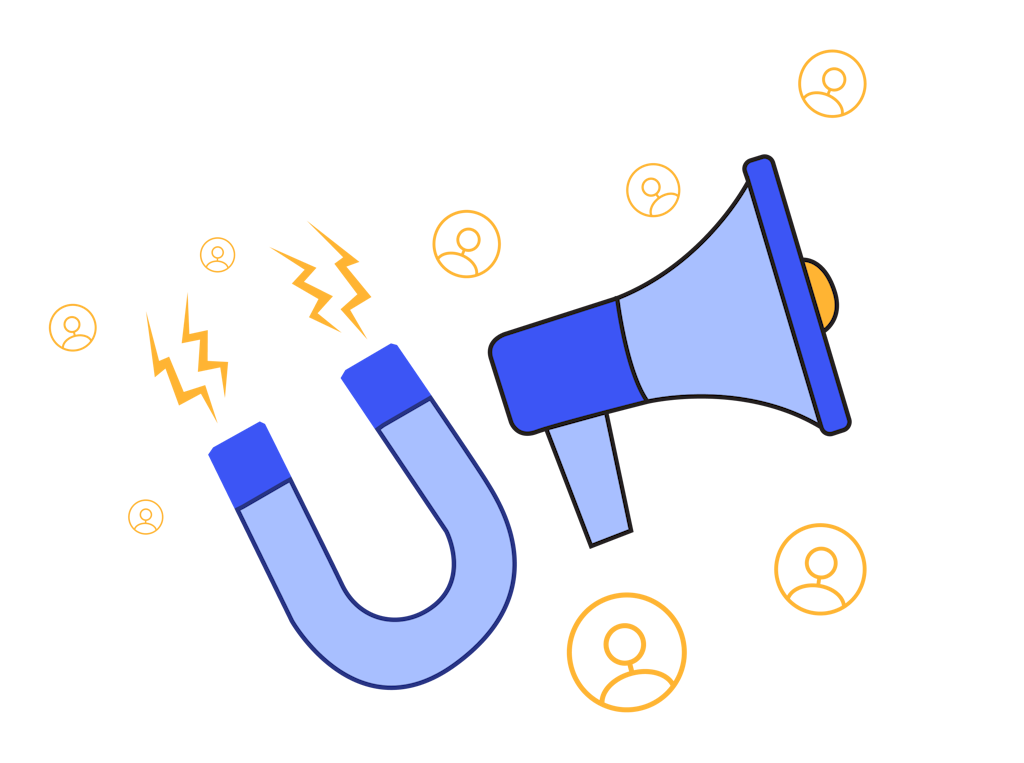
What is Inbound Marketing?
What is Inbound Marketing?
Inbound marketing is a customer-centric approach focusing on attracting, engaging, and delighting potential customers through valuable content and experiences.
The content can take various forms, such as blog posts, videos, e-books, podcasts, and infographics. Businesses can establish themselves as trusted authorities in their industry by creating and sharing content that meets prospective customers' expectations.
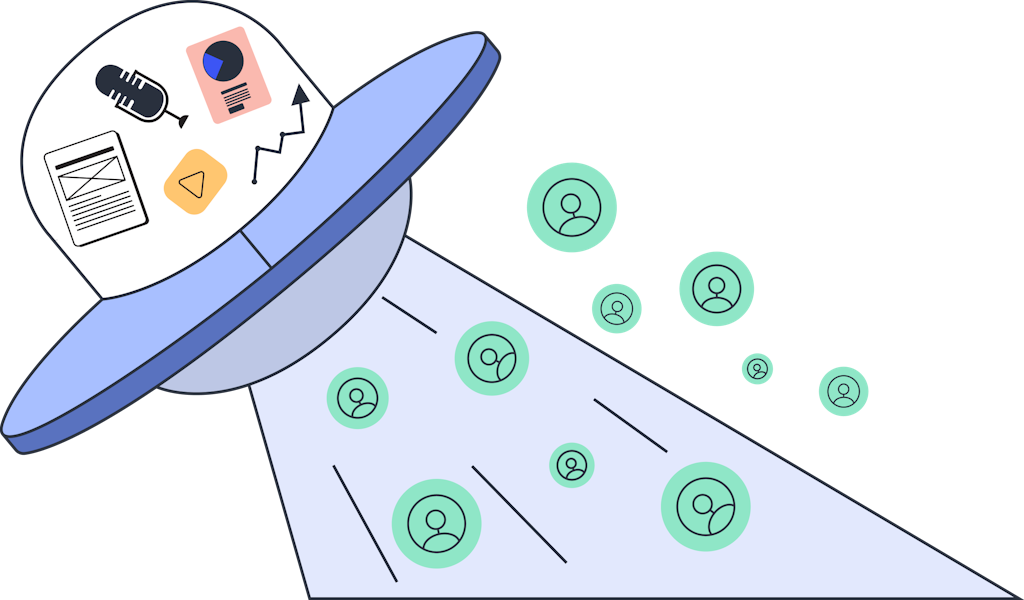
How Does Inbound Marketing Work?
How Does Inbound Marketing Work?
Inbound strategies are a dynamic and customer-centric approach that surpass traditional outreach methods.
Here is the systematic pattern of inbound marketing, offering insight into how businesses attract, convert, close, and delight leads.
Attracting prospects
Attracting prospects
By crafting valuable, informative, and relevant content, businesses capture the attention of customers seeking solutions.
Converting visitors into leads
Converting visitors into leads
Once your content entices prospects, calls-to-action (CTAs), landing pages, and lead-capturing forms become vital in this stage. Guide visitors to take specific actions, such as downloading an e-book or signing up for a newsletter.
Closing the deal
Closing the deal
As leads move through the buyer's journey, marketing automation tools allow you to tailor personalized email campaigns that deliver targeted content based on the lead's preferences and behavior.
Delight customers and foster advocacy
Delight customers and foster advocacy
Excite your customers with valuable post-purchase content, personalized support, and exclusive offers to cultivate a sense of loyalty and satisfaction. Satisfied customers will likely become brand advocates and contribute to your brand's growth.
Feedback loop and continuous improvement
Feedback loop and continuous improvement
Closely monitoring the performance of your content, campaigns, and customer interactions allow businesses to gain valuable insights into what works and what can be enhanced.
Businesses can easily forge lasting connections with their audience through inbound strategies, ensuring sustained growth and success.
Key Principles & Strategies of Inbound Marketing
Inbound marketing seeks to build authentic relationships and provide meaningful experiences to guide leads through the buyer's journey.
The principles and strategies driving successful inbound marketing campaigns include:
Content creation
Content creation
Creating informative, engaging, and relevant content in the form of blog posts, videos, e-books, or podcasts, allows businesses to establish themselves as legitimate sources of information.
Search Engine Optimization (SEO)
Search Engine Optimization (SEO)
Using relevant keywords, meta tags, and other SEO techniques enables businesses to increase their content's visibility in search engine results, positioning the brand as an authoritative solution provider.
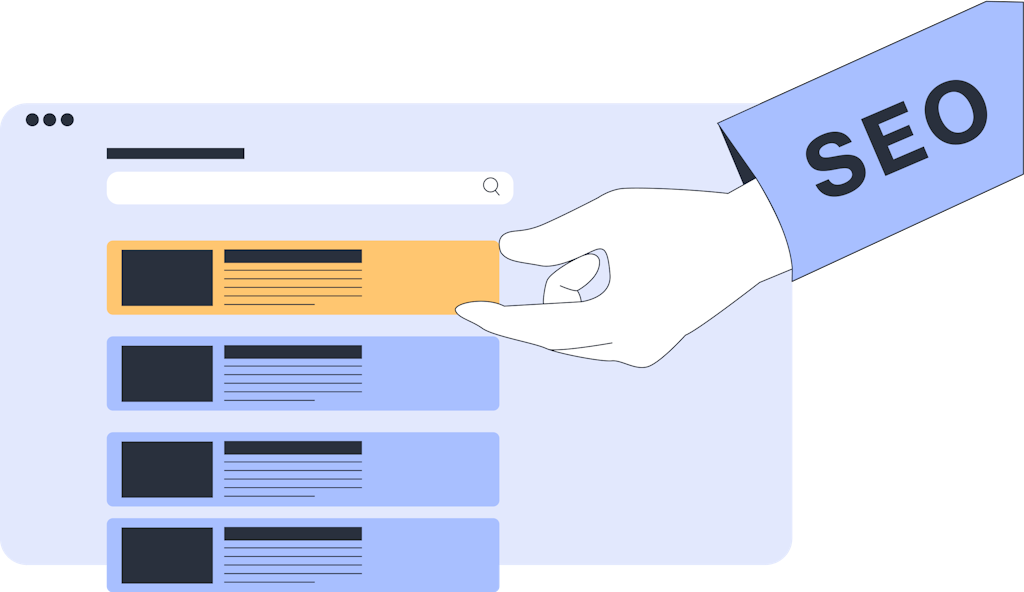
Social media engagement
Social media engagement
Social media platforms offer a powerful channel to share and amplify your content, engage with your audience, and establish a meaningful online presence.
Lead generation and conversion
Lead generation and conversion
Through compelling content and well-placed calls-to-action (CTAs), businesses capture leads' attention and guide them to dedicated landing pages.
Marketing automation
Marketing automation
Marketing automation tools allow businesses to create personalized workflows, saving time, ensuring timely follow-ups, and maintaining engagement.
Data Analysis and Iteration
Data Analysis and Iteration
Businesses understand the effectiveness of their campaigns by tracking key performance indicators (KPIs) such as website traffic, conversion rates, and engagement metrics.
Incorporating these principles and strategies into your inbound marketing efforts creates an all-inclusive framework that equips businesses with the agility needed to thrive in an ever-changing marketing ecosystem.
Advantages of Inbound Marketing
By focusing on meaningful engagement, valuable content, and building authentic relationships, inbound marketing offers the following advantages for businesses seeking to thrive in the digital era.
Targeted and qualified leads
Targeted and qualified leads
Inbound marketing attracts people seeking solutions for your offerings, resulting in a more targeted and qualified audience.
Cost-effectiveness
Cost-effectiveness
Businesses can allocate resources to creating valuable content that continues to generate leads and drive traffic over time.
Building brand loyalty and credibility
Building brand loyalty and credibility
By consistently delivering valuable content that addresses the needs and concerns of your audience, you establish your brand as a trusted authority in your industry.
Measurable results & ROI
Measurable results & ROI
Inbound marketing is highly measurable, allowing you to track website traffic, conversion rates, social media engagement, and more metrics, enabling you to calculate a tangible return on investment (ROI).
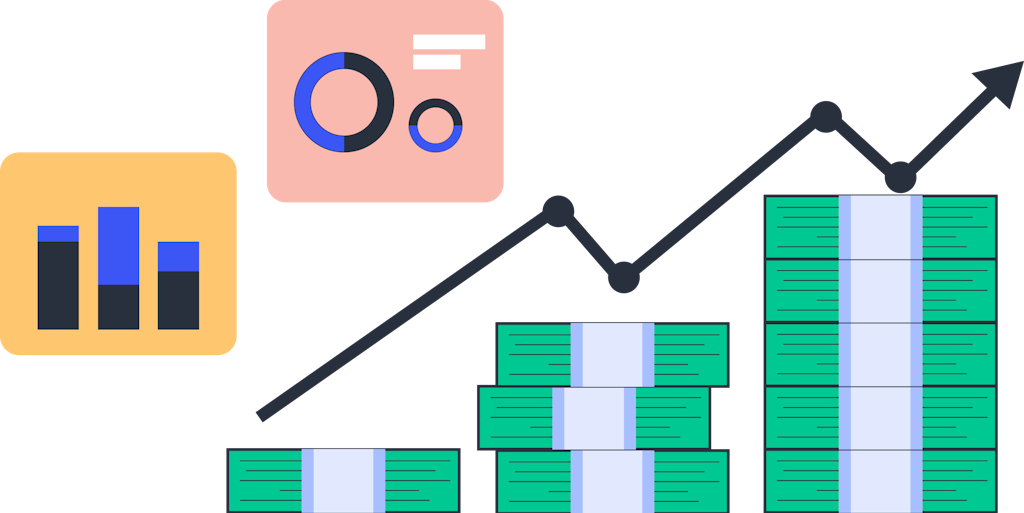
Long-term results
Long-term results
Valuable content attracts and engages prospects over time, contributing to a sustainable stream of leads and conversions.
Improved customer relationships
Improved customer relationships
Providing valuable content and addressing customer needs creates a positive experience beyond the transaction, fostering a deeper connection and enhancing customer satisfaction.
Adaptability and Scalability
Adaptability and Scalability
As your business evolves, your content and strategies can adapt to changing market dynamics and customer preferences, ensuring your approach remains relevant and practical.
Aligning your efforts with your audience's needs and preferences drives conversion. It also establishes a solid foundation for lasting brand success in this increasingly competitive digital landscape.
Disadvantages of Inbound Marketing
While inbound marketing offers many pros, understand it also has some setbacks. These disadvantages highlight areas where businesses may encounter difficulties implementing inbound marketing strategies.
Time
Time
It may take several months, or even years, to build brand credibility and a loyal audience, especially if you're starting from scratch.
Competitive landscape
Competitive landscape
Standing out amidst the competition can be challenging, and getting your content noticed requires strategic differentiation and exceptional quality.
Content creation and resource investment
Content creation and resource investment
Consistently crafting high-quality, engaging content demands time, effort, and creativity.
While the challenges may seem daunting, businesses can manage them through careful planning, realistic expectations, and a willingness to learn from the emerging trends.
What is Outbound Marketing?
What is Outbound Marketing?
Outbound marketing, traditional or interruption marketing, involves reaching out to a broad audience with promotional messages to advertise products or services.
Unlike inbound marketing, which aims to attract and engage potential customers through valuable content and experiences, outbound marketing relies on initiating contact and broadcasting messages to a wider audience to generate interest and drive sales.
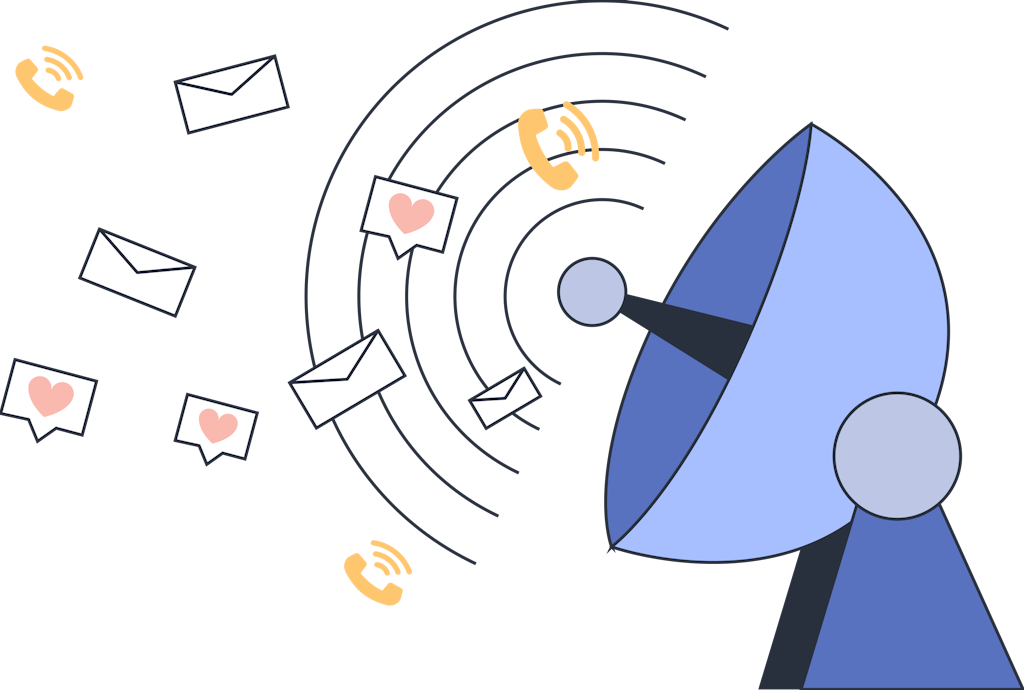
How Does Outbound Marketing Work?
How Does Outbound Marketing Work?
Outbound marketing harnesses strategies that push messages out to potential customers using mass media channels. Below are the strategies and tactics defining outbound marketing and how it seeks to generate leads through immediate and direct means.
Pushing messages to a wide audiencecheckmark-10
Pushing messages to a wide audiencecheckmark-10
Outbound marketing involves interruptive tactics such as television and radio commercials, print advertisements, or telemarketing.
Utilizing mass media channels
Utilizing mass media channels
The strategy leverages traditional mass media channels to reach many people simultaneously.
Generating immediate engagement
Generating immediate engagement
It creates urgency or offers limited-time promotions to encourage quick action.
Lead generation and conversion
Lead generation and conversion
Tactics like cold calling or direct mail campaigns are employed to initiate direct interactions and conversations with potential buyers.
Limited personalization
Limited personalization
Personalization is lower than inbound marketing as messages resonate with a broader audience.
Key Principles & Strategies of Outbound Marketing
By leveraging various strategies, outbound marketing aims to create brand awareness, generate leads, and drive immediate customer engagement. These are the principles defining outbound marketing:

Proactive audience reach
Proactive audience reach
It involves pushing marketing messages to a broader audience through various channels, aiming to capture their attention and pique their interest.
Message control
Message control
Businesses can craft tailored messages highlighting specific features, benefits, or promotions, ensuring the intended message is communicated directly to the audience.
Wider market reach
Wider market reach
This marketing strategy is designed to reach a broad and diverse audience. Mass media channels and broad-reaching tactics help expose the brand to more potential customers.
Time-specific campaigns
Time-specific campaigns
Outbound marketing campaigns encourage immediate action and drive conversions by generating a sense of urgency.
Direct response management
Direct response management
This marketing includes a direct call to action, prompting immediate responses from potential customers.
Outbound marketing strategies include
Traditional advertising
Traditional advertising
Advertisements in newspapers, magazines, TV, radio, and billboards. These methods provide widespread exposure and are suitable for creating broad brand awareness.

Cold calling and telemarketing
Cold calling and telemarketing
Cold calling involves contacting potential customers via phone to introduce products or services. Telemarketing engages in direct sales conversations to convert leads into customers.
Events & trade shows
Events & trade shows
Participating in industry events, trade shows, and exhibitions allows businesses to showcase their offerings, interact with prospects face-to-face, and generate leads through direct engagement.
Paid advertising
Paid advertising
It includes tactics like pay-per-click (PPC) ads and display ads on search engines and social media platforms. These ads appear when users search for relevant keywords or browse related content.
Email marketing
Email marketing
Outbound email marketing involves sending promotional emails to a targeted list of recipients, driving immediate response.
Understanding and implementing these principles and strategies of outbound marketing enable businesses to create impactful campaigns that loop in customers, drive conversions, and generate a measurable return on investment.
Advantages of Outbound Marketing
Outbound marketing offers the following advantages that contribute to a comprehensive marketing strategy.
Wider audience reach
Wider audience reach
Businesses can expose their brand and message to a vast demographic through mass media channels like TV, radio, and billboards.
Immediate impact
Immediate impact
TV commercials, radio spots, and high-visibility print advertisements can capture attention and create an instant impression.
Control over messaging
Control over messaging
Businesses can craft tailored messages highlighting specific features, benefits, or unique selling points.
Measurable response
Measurable response
Direct calls to action enable businesses to track and analyze the effectiveness of campaigns in real-time, allowing for data-driven optimization.
Traditional reach
Traditional reach
TV and radio maintain a significant audience base, making them effective avenues for reaching older demographics and those less reliant on digital media.
While the challenges may seem daunting, businesses can manage them through careful planning, realistic expectations, and a willingness to learn from the emerging trends.
Disadvantages of Outbound Marketing
Although outbound marketing has its merits, it also has drawbacks that reflect the evolving preferences of modern consumers and the changing marketing landscape.
Interruption and invasiveness
Interruption and invasiveness
TV commercials, radio ads, and pop-up ads can be perceived as intrusive, leading to negative brand perception.
Lower audience engagement
Lower audience engagement
The lack of two-way communication and personalized interactions can limit the depth of engagement and interaction with the audience.
Declining effectiveness
Declining effectiveness
With the spread of ad-blocking software and changing media consumption habits, traditional outbound methods might struggle to reach and resonate with audiences effectively
Outbound marketing still has its place, but businesses should carefully consider its limitations and integrate it with modern, customer-centric approaches to create a well-balanced and effective marketing mix.
Inbound Vs. Outbound Marketing: The Differences
Inbound Vs. Outbound Marketing: The Differences
Inbound and outbound marketing represent two contrasting strategies that reflect the evolution of consumer behavior and the diversification of communication channels. Each marketing plan offers unique strategies to engage audiences and drive business growth.
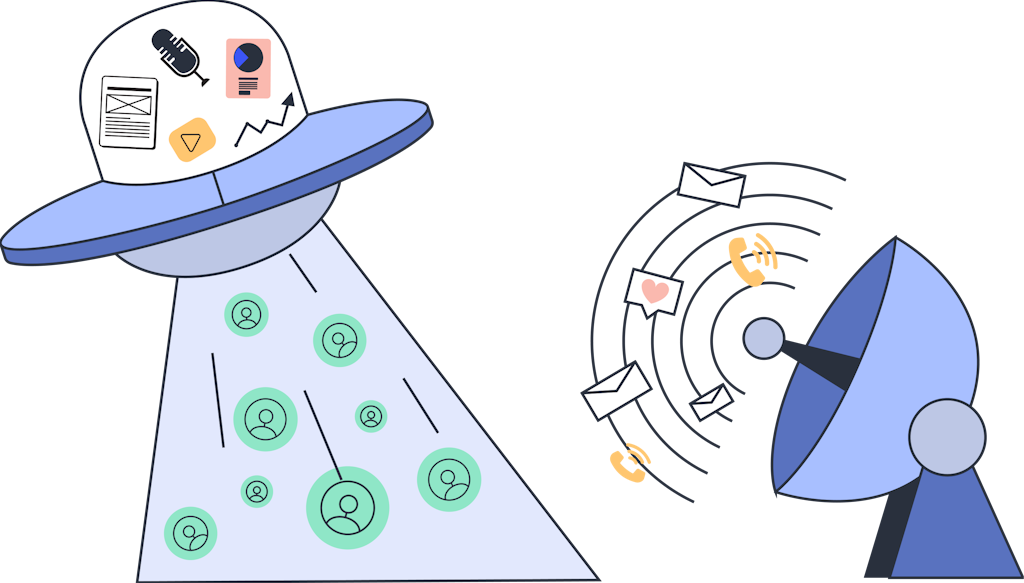
1. Targeting & Reach
The concepts of targeting and reach dictates the effectiveness and efficiency of campaigns.
It takes a customer-focused approach by creating valuable and relevant content. This approach ensures engagement from a highly qualified audience, increasing the likelihood of conversions and long-term customer relationships.
It adopts a broader approach to reach by casting a wider net, reaching individuals who may or may not be actively seeking your products or services.
The decision between these approaches depends on your business goals, audience preferences, and the balance between highly targeted engagement and broader exposure.
2. Cost-effectiveness and ROI
Inbound and outbound marketing offer distinct approaches to achieving financial goals, each with its implications for budget allocation and long-term value.
By creating valuable content that resonates with the target audience, addressing their pain points, and nurturing leads through personalized experiences, inbound marketing seeks to foster trust, credibility, and long-term customer loyalty.
This strategy tends to emphasize immediate conversions and lead generation. The approach leans more transactional, focusing on capturing attention and prompting swift action.
You can steer your marketing efforts toward success by aligning your approach with your financial goals and understanding the nuances of cost-effectiveness and ROI.
3. Relationship Building and Customer Engagement
Inbound and outbound marketing adopt different approaches to forging meaningful relationships and engaging customers.
The strategy aims to create a two-way dialogue. Through consistent and valuable interactions, businesses can foster a deeper emotional connection with their audience, resulting in enduring relationships transcending individual transactions.
The approach tends to be more transactional, focusing on capturing attention and generating immediate responses. The effectiveness in nurturing long-term customer loyalty may depend more on ongoing efforts and customer experiences beyond the initial interaction.
The choice between these approaches depends on your business's priorities, objectives, and the emphasis you place on long-term customer engagement and loyalty.
4. Measurement and Analytics
Effective measurement and analytics allow businesses to gauge the success of their campaigns, make informed decisions, and refine their approaches over time.
Various tools and platforms allow tracking key metrics. Through advanced analytics, businesses can understand the performance of individual pieces of content, the effectiveness of specific channels, and the behavior of their target audience.
Direct response metrics such as click-through rates, conversion rates, and call logs provide insights into the effectiveness of outbound campaigns. While it may lack in-depth data as inbound strategies, it still allows businesses to assess the reach and engagement of their messages and make necessary adjustments.
Whether through comprehensive analytics or focused response measurements, each approach contributes to a well-rounded understanding of campaign effectiveness.
See the magic for yourself
See the magic for yourself
Why waste time on prospects that don't convert?
Get a free trial or book a personalized demo.
Start Now Why waste time on prospects that don't convert?
Get a free trial or book a personalized demo.
Free Trial
Dedicated CSM
Global Coverage
GDPR compliant
Choosing the Right Approach for B2B Lead Generation
Choosing the Right Approach for B2B Lead Generation
Defining clear B2B business goals is paramount. Are you seeking immediate conversions, building long-term relationships, or enhancing brand awareness? Inbound marketing excels at relationship-building, while outbound marketing may excel in immediate lead generation.
In addition, understand your target audience. Are they seeking solutions (inbound) or might benefit from an introduction to your offerings (outbound)? Adopting either inbound or outbound marketing—or a strategic blend of both—requires careful consideration of various factors.
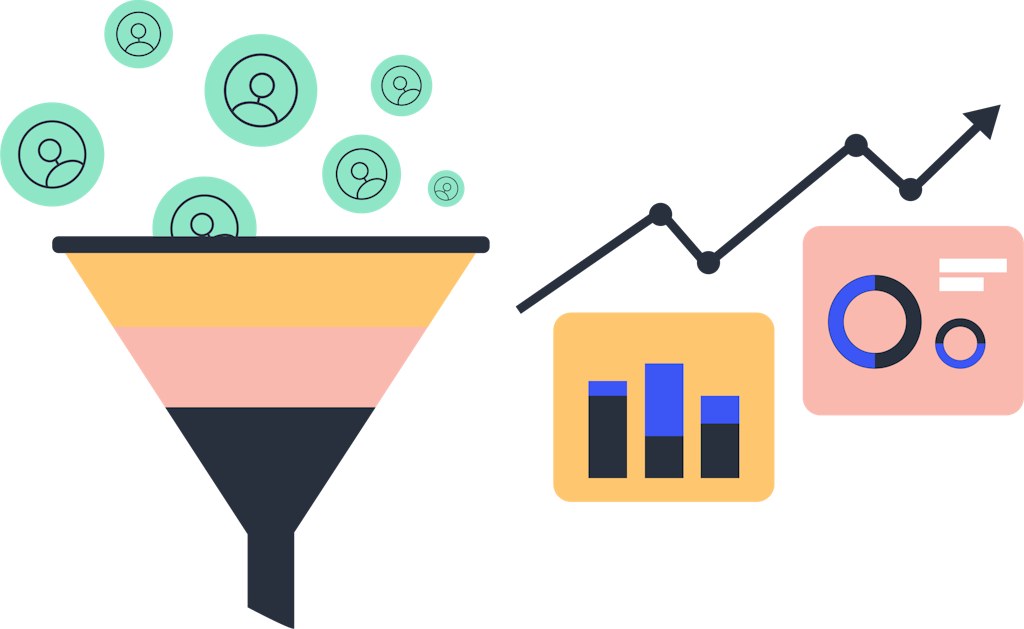
1. Evaluating Your Business Goals and Target Audience
Before embarking on any lead generation endeavor, it's imperative to establish SMART objectives—Specific, Measurable, Achievable, Relevant, and Time-bound. This framework crystallizes your intentions and empowers you to track progress and success.
You cater to an audience seeking solutions through targeted content creation, SEO optimization, and personalized experiences, paving the way for enduring customer loyalty. For businesses seeking immediate conversions and rapid lead generation, outbound strategies, like direct mail, cold calling, and trade shows, allow you to cast a wider net
2. Combining Inbound and Outbound Strategies
By weaving together inbound and outbound strategies, businesses create a holistic marketing approach that leverages the strengths of each methodology. Inbound marketing builds trust and credibility over time, while outbound marketing generates immediate responses.
For example, the content generated through inbound marketing—informative blog posts, thought leadership pieces, and engaging videos could be potent information for outbound initiatives.
3. Aligning Marketing Efforts with Sales Funnel
The sales funnel comprises distinct stages—awareness, consideration, and decision. Inbound strategies build awareness and nurturing consideration, while outbound strategies generate immediate responses and decisions.
At the top of the funnel, content-rich blog posts, social media engagement, and search engine optimization (SEO) draw potential leads into the fold. Middle-of-the-funnel strategies offer more direct engagement, nurturing leads further along their decision-making journey. Finally, the bottom-of-the-funnel strategy is the final nudge toward conversion.
Importance of Targeting in Inbound Marketing
Importance of Targeting in Inbound Marketing
When your content speaks directly to the concerns of your target audience, prospects are more inclined to take the desired actions, be it signing up for a newsletter, downloading an ebook, or making a purchase.
In addition, when you cater to the specific needs of your audience, you nurture a sense of connection extending beyond the initial interaction, resulting in lasting customer loyalty and repeat business.
By honing in on individuals more likely to convert, you optimize resource allocation and minimize wastage, ensuring that your marketing efforts yield a favorable return on investment.
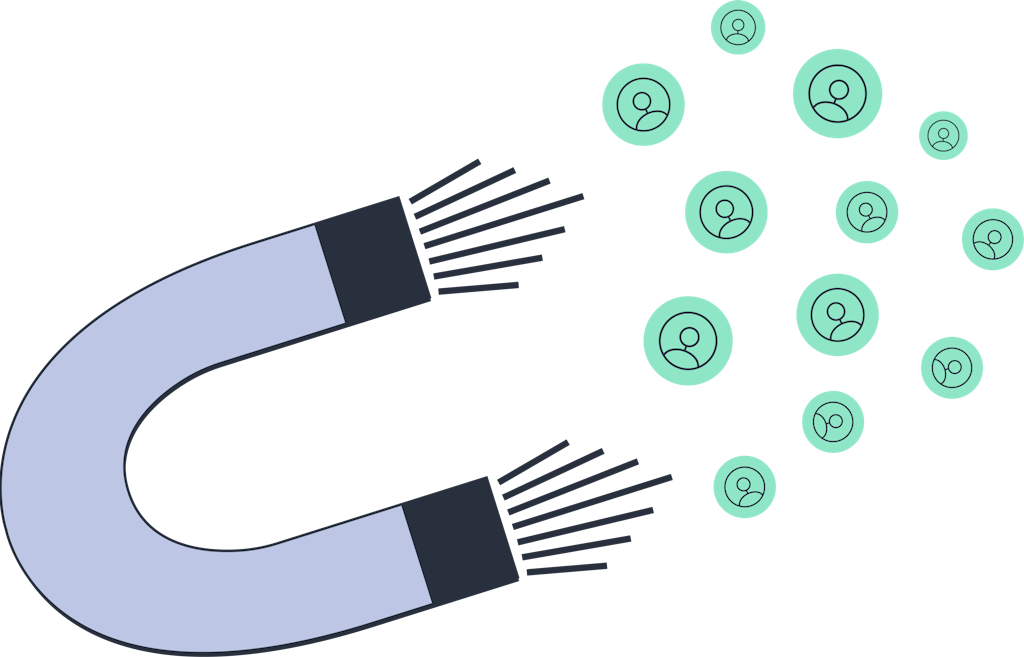
Importance of Targeting in Outbound Marketing
Importance of Targeting in Outbound Marketing
Precise targeting ensures resources are allocated where they matter most. By focusing on specific segments, you gain insights into the effectiveness of your campaigns, enabling data-driven decisions that refine your strategies for optimal results.
Demographic, geographic, behavioral, and psychographic segmentation techniques allow you to dissect your audience into meaningful groups, tailoring your messaging to resonate with their unique characteristics and preferences.
The Role of AI In B2B Lead Generation
The Role of AI In B2B Lead Generation
Artificial Intelligence(AI) utilizes advanced algorithms and computational power to automate, enhance, and optimize marketing processes.
AI empowers marketers to analyze vast datasets, predict customer behaviors, and personalize interactions at an unprecedented scale and speed. By enabling personalized and timely interactions, AI enhances customer engagement and nurtures prospects through the sales funnel.
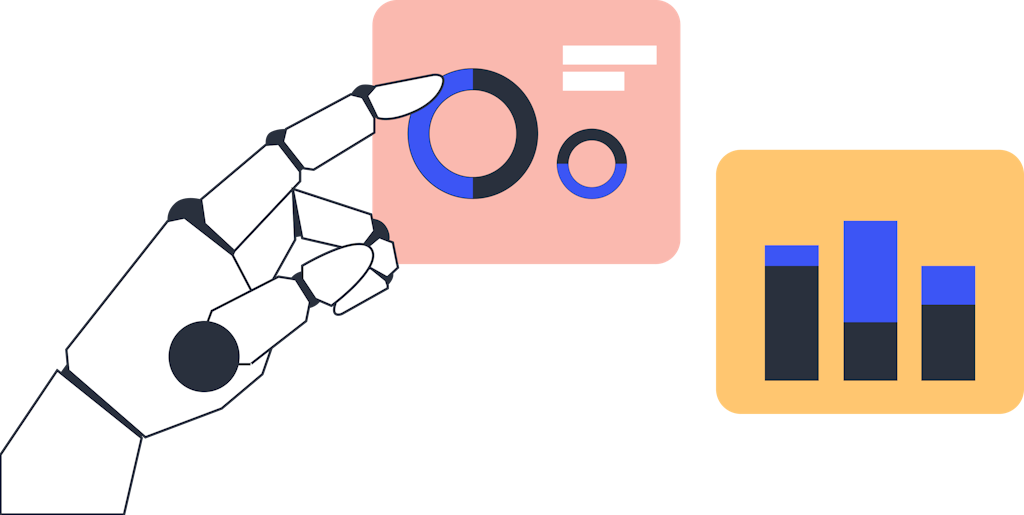
How AI Can Enhance Lead Generation
AI reshapes how businesses identify, engage, and nurture potential customers. Here are ways AI can elevate lead generation efforts, using its capabilities to drive accuracy, personalization, and predictive insights.
Advanced lead scoring
Advanced lead scoring
By analyzing vast volumes of historical data, engagement patterns, and conversion probabilities, AI algorithms provide a more accurate understanding of each lead's potential.
Personalization at scale
Personalization at scale
By leveraging AI-driven insights, marketers can tailor content and offers to individual prospects, addressing their unique pain points and preferences.
Predictive lead generation
Predictive lead generation
AI can predict prospects by analyzing historical data and identifying patterns, effectively reducing the guesswork and optimizing outreach strategies.
AI provides data-driven precision and human ingenuity, allowing businesses to unlock different possibilities resulting in improved efficiency, engagement, and higher conversion rate.
Benefits of Using AI for B2B Lead Generation
Integrating artificial intelligence (AI) into B2B lead generation has the following advantages that amplify the effectiveness and propel businesses toward success.
Improved efficiency
Improved efficiency
Repetitive and time-consuming tasks, such as data entry and lead scoring, are executed swiftly and accurately, freeing up valuable human resources to focus on high-value activities.
Enhanced customer experience
Enhanced customer experience
Through dynamic content recommendations and timely responses, AI fosters a seamless and personalized customer journey, deepening engagement and instilling a sense of value.
Data-driven decision-making
Data-driven decision-making
By analyzing historical trends, prospect behavior, and conversion patterns, AI enables businesses to make informed choices that maximize the impact of lead generation efforts.
AI is an invaluable ally, enhancing efficiency, enriching customer experiences, and guiding strategic decision-making.
Discover Tailored Companies at Any Scale
Discover Tailored Companies at Any Scale
Ocean.io is a B2B data and intelligence platform providing companies with insights and information about other businesses. We offer data-driven services to help businesses make informed decisions, such as identifying potential leads, understanding market trends, and analyzing competitor information.
Book your demo today and experience a 2x Increase in demo Booking rate, a +25% boost in close rate, and a 1-day implementation time.
